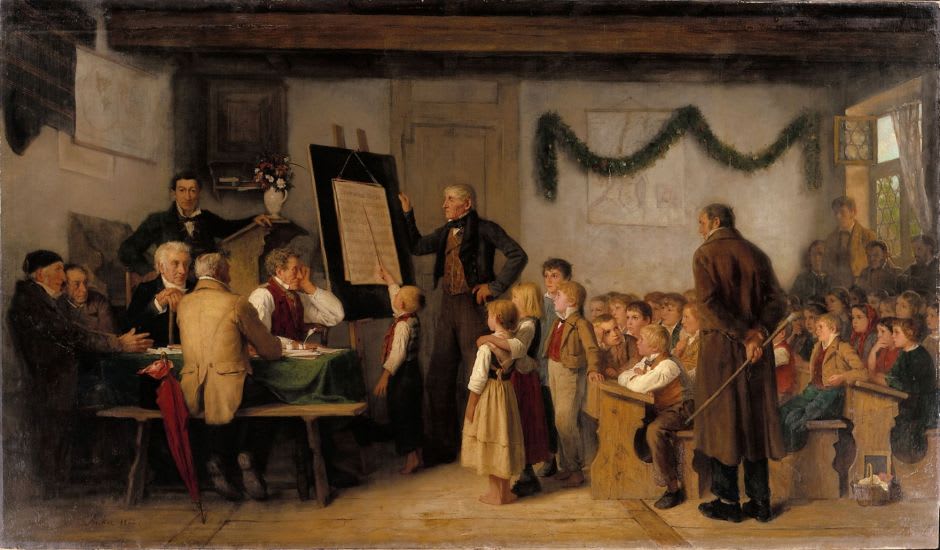Trump and Education: What’s the Beef?
What screams freedom louder than turning colleges into your personal piñatas?

The American education system has experienced a seismic shift since Donald Trump’s takeover as President in January. His escalating pressure on universities is stirring deep concerns about the future of higher education and society at large. An attack such as this is critical, because it is an attack on the very space that inspires critical thinking and drives societal progress. It is not mere fear mongering anymore; this is a new form of draconianism that permeates the whole of American society.
In 2017, during his first term as President, Trump criticized universities as part of the wider conservative belief that elite schools heavily push liberal ideas. He and other conservatives viewed these institutions as catalysts of “radical left indoctrination,” and his attacks aimed to counter that influence. Another crucial moment, in February of that same year, was when he tweeted a threat to cut federal funding to UC Berkeley. The threat came as his response to the university’s canceling of a speech by right-wing commentator Milo Yinnapoulos. But the canceling of the speech had not been an act of censorship, as the conservatives interpreted it, but one of mere pragmatism: violent protests had preceded the scheduled time for the speech, whereby over 1500 students gathered to object to the commentator’s presence. A group of 150 masked individuals then infiltrated the protests and engaged in violent behavior, such as setting fire, throwing Molotov cocktails, and smashing windows—an incident that drove the university to cancel the event two hours in advance. Yet, Trump seized the moment to represent Berkeley as a monolith of liberal intolerance. His decision to cut federal funding wasn’t about political nuance; it was personal. This reiterates Trump’s willingness to use federal power to punish institutions for perceived infringements on free speech, providing us with a masterclass in authoritarian governance.
Today, Trump’s funding cuts are simply an act of economic sabotage. Harvard has lost $2.2 billion, Columbia $400 million, Cornell $1 billion, and several other universities are facing similar ruin—all under the flimsy pretext of restraining antisemitism tied to the 2024 pro-Palestine protests. “I will fire the radical left accreditors that have allowed our colleges to become dominated by Marxist maniacs and lunatics,” conveyed Trump.
And he’s not done yet. Recently, his administration gutted Title IX protections, dismissing safeguards against sexual misconduct under the disguise of “fairness” for accused students. This move dismisses survivors of assault, leaving them vulnerable on campuses already strained by budget cuts. This represents Trump’s priorities: political point-scoring over human safety. His rhetoric is also quite hypocritical, as he has pressured universities to cancel events with progressive speakers, as seen in a March 2025 directive urging schools to “balance” guest lectures or face accreditation reviews—he has, in other words, committed the same sin he accused those institutions of in his previous presidency: an infringement on freedom of speech. This is not freedom, it’s selective censorship that ensures only Trump-approved voices thrive.
More than 200 students at Harvard University have signed an open letter calling on the administration to “reject any unreasonable or unlawful demands” from the Trump White House, as discussions between the university and federal officials continue, as per a report by The Harvard Crimson. The letter, circulated on Friday by the group Harvard Students for Freedom, comes amid speculation over a potential agreement between the university and the Trump administration. The open letter, titled “To Harvard from its Students,” gathered 197 public signatures and 29 anonymous ones. It was open to all current undergraduate and graduate students. The student group behind the letter, formed earlier this spring, voiced concern that the university could compromise its academic independence in order to avoid federal pressure.
Trump’s ongoing assault on these spaces doesn’t protect free speech; it weaponizes it. It doesn’t create balance; it imposes control. It doesn’t empower students; it punishes them for thinking independently. The justification is often framed as protecting free speech or rooting out bias, but the pattern suggests something else: a sustained effort to pressure academic institutions into aligning with a particular political worldview.
Credits
Written by Omyra, Edited by Roshni Ray




